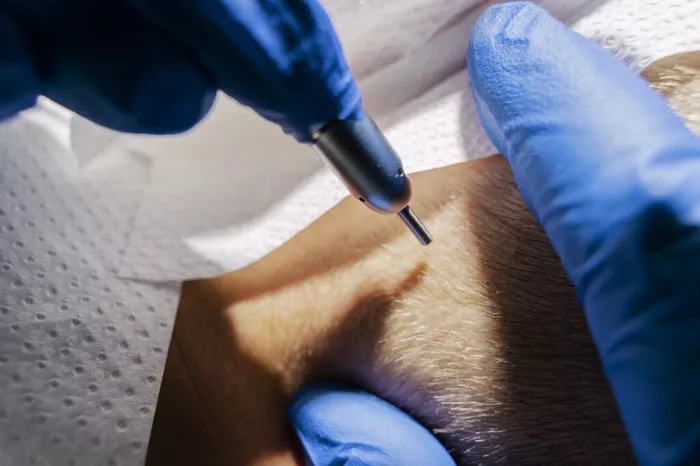Hair loss affects millions of people worldwide, impacting self-confidence and overall quality of life. While there are many treatments for hair thinning and baldness, one of the most effective and lasting solutions is a hair transplant. This surgical procedure has gained immense popularity over recent decades as it offers a natural-looking restoration of hair growth. But what exactly is a hair transplant for? In this article, we will explore the primary purposes of hair transplant, who benefits from it, and how it has transformed the field of aesthetic medicine.
What Is Hair Transplant?
A hair transplant is a medical procedure designed to relocate hair follicles from a dense growth area, often the back or sides of the scalp, to areas affected by hair loss. This process results in new hair growth in balding or thinning areas. Unlike topical treatments or medications, a hair transplant provides a permanent solution by physically moving healthy hair follicles to where they are needed.
The Primary Purpose of Hair Transplant
Restoration of Hair Loss Due to Androgenetic Alopecia
The most common reason people seek hair transplant surgery is to combat androgenetic alopecia, commonly known as male or female pattern baldness. This genetic condition causes progressive thinning of hair, primarily on the scalp’s crown and frontal hairline. Hair transplant surgery effectively restores the natural hairline and improves the density of hair in thinning areas.
Correction of Hair Loss from Trauma or Medical Conditions
Hair loss can also result from trauma such as burns, accidents, or surgical scars. Some medical conditions like alopecia areata or scalp infections may cause localized bald patches. Hair transplant surgery can be used to cover these scarred or bald areas, significantly improving appearance and helping individuals regain confidence.
Enhancing Eyebrows, Beard, and Other Body Hair
Beyond the scalp, hair transplant techniques have evolved to address hair loss or sparse hair in other regions, including eyebrows, beard, and chest. People who experience patchy eyebrows or thin beard growth may opt for hair transplant procedures to achieve fuller, natural-looking results.
Who Is a Candidate for Hair Transplant?
Hair transplant is suitable for individuals who have sufficient donor hair in unaffected scalp areas and realistic expectations about the outcome. Ideal candidates include men and women with stable hair loss, typically those who have tried and failed with non-surgical treatments. However, those with diffuse hair loss or certain medical conditions might not be good candidates.
How Hair Transplant Works
The two main techniques in hair transplant surgery are Follicular Unit Transplantation (FUT) and Follicular Unit Extraction (FUE). Both involve harvesting healthy hair follicles from the donor area and implanting them in the thinning or bald zones. While FUT involves removing a strip of scalp to harvest hair grafts, FUE extracts individual follicular units directly. The choice depends on various factors such as the extent of hair loss, patient preference, and surgeon expertise.
The Impact of Hair Transplant Surgery
Hair transplant surgery provides a natural and permanent way to restore hair, often leading to a significant boost in self-esteem and quality of life. The results can be remarkable, as the transplanted hair grows just like the original hair. Patients can expect to style their hair normally without fear of further baldness in the transplanted areas.
For those considering this option, it is crucial to understand the entire process, including the surgical procedure, post-operative care, and realistic expectations about hair growth timelines.
The Importance of Recovery and Aftercare
Recovery following a hair transplant is a critical phase. Proper care during the hair transplant recovery period ensures the best outcome. Patients typically experience minor swelling, redness, and scabbing around the grafted areas, which gradually heal within days to weeks. Following the surgeon’s guidelines about cleaning, medication, and avoiding strenuous activity helps maximize graft survival and hair growth.
Cost Considerations
Understanding the hair transplant cost is also important when deciding on this procedure. The price can vary widely depending on the technique used, the extent of hair loss, the number of grafts required, and the clinic’s location. While hair transplant may seem expensive upfront, its permanence and effectiveness often justify the investment compared to ongoing non-surgical treatments.
Before and After: Visualizing the Transformation
Seeing real patient results can be highly motivating. The dramatic changes in hair transplant before and after photos illustrate the potential impact of the procedure on appearance and confidence. These images showcase natural hairlines and improved density, highlighting the artistry and precision involved in a successful transplant.
Conclusion
Hair transplant is primarily for those seeking a permanent, natural solution to hair loss. Whether it is to address genetic baldness, cover scars, or enhance facial hair, this procedure offers a reliable way to restore lost hair and improve self-image. Understanding the reasons behind hair transplant, the techniques involved, recovery process, and costs helps patients make informed decisions. With advancements in technology and surgical expertise, hair transplant continues to be a leading option for people striving to reclaim their hair and confidence.
Related Topics:
- Police Investigate Hair Transplant Clinic in Kochi Following Patient Infection
- Hair Transplant Horror: Kerala Man Battles Flesh-Eating Infection After Procedure
- How Much Does It Cost to Lower Hairline?


